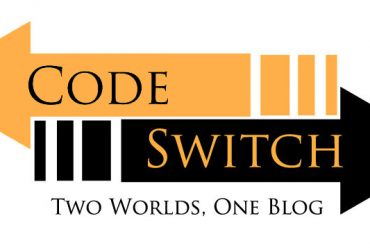In Keyword Design, I use a single word as inspiration for a mundane item, a magic item, a feat, a spell, and a class option. Today’s word is “child” as suggested by Nick V.
This week’s keyword is Child. Bringing more options for kid PCs into Pathfinder has been a personal goal of fellow network member Alex Augunas for a long time (see: Childhood Adventures). My goal this week is to write options that are up to his standards. Let’s find out!
| Child | ||
| TYPE | NAME | DESCRIPTION |
| Mundane Item | Textbook | Enhance the youth’s ability to learn |
| Magic Item | Nerf guard | A soft baton that removes the lethality of nearby weapons and magic |
| Feat | Novice feats | Feats that are strong the lower your level |
| Spell | Rejuvenate | Turn subject into a younger version of themselves |
| Class Option | Imagination Summoner | A summoner with child and adult counterparts |
New Mundane Items
TEXT BOOKS
Cost: 150 gp Weight:3 lbs
Description
A heavy tome dedicated to a specific subject and associated to an ability score. By studying a text book for 1 hour a day for a week, the reader gets a +1 circumstance bonus to the associated ability score for 1 day. Properly studying a text book requires ample note taking and flipping back and forth, which is hard on the spine. Gaining this benefit expends the text book.
Most characters can only study one text book at a time. However, characters with the young template can study up to 3 text books at one time, each requiring 1 hour of study, and every continuous day they study the same textbook extends the duration of the benefit by 1 day. If a young character fails to study one day, they must study the book every day for a week again to regain the benefit. As long as a character has the young template, studying does not expend a textbook.
This may seem out of place, but I don’t like Harry Potter for a lot of reasons. This is after so many attempts to try it (yes, I’ve tried reading the books). One of my issues (and there are about a million others, I just have been asked to justify how I could dislike those books so often and made to go into such detail that I can pinpoint some very small issues I have that are consistent with my larger issues with it) is how Hermione uses a mnemonic device that every wizard should know to get past one of Voldemort’s traps. The argument, and a decent one, is that it would keep out adult wizards who are distracted by their lives, whereas learning to be wizard is a huge part of being at a wizard school. That argument is the basis for this mundane item. It’s also a workaround for how kid PCs can keep up with adult PCs; the same reason I have progressively gotten worse at math the longer I’m out of school. The younger you are, the easier it is to learn, so hit the text books kids!
New Magic Item
NERF BATON
Aura strong transmutation; CL 7th; Slot -; Price 42 000 gp; Weight 1 lb
DESCRIPTION
This foam-coated wooden rod impersonates a sword at its simplest form. The foam coating absorbs impact, meaning it can be used play to pretend without risk of serious injury or can be used to intentionally bruise but not kill. A nerf baton can be used as an improvised weapon that deals nonlethal damage without penalty or provoking an attack of opportunity.
The real power of a nerf baton lies in its ability to neutralize the lethality of nearby weapons and damage. When the nerf baton is held aloft and a command word spoken, weapons and ammunition within 170 ft are considered nonlethal, and any spells that normally deal any type of damage cast in the area of effect instead deal nonlethal damage. These effects last until the wielder releases the nerf baton or another command word is spoken.
Nerf batons are popular at schools, where students can practice with real weapons to familiarize themselves with the weight and full force require to utilize weapons without their lives or the lives of fellow students at risk. School faculties are also among the rare groups that include members who can cast all of the required spells to create a nerf baton. When used for training exercises, they tend to be used in contain areas so as to not affect the spells and weapons of guards.
CONSTRUCTION REQUIREMENTS
Craft Wondrous Item, dispel magic, warp metal, warp wood; Cost 21 000 gp
Let me first say that if this was for publication anywhere but this blog, I would never call this a nerf baton. I also need to point out that I’m not capitalizing the N, and that this is the urban dictionary sense of nerf. I checked if any legitimate dictionaries have adopted the term and, sadly, found none.
Some of my earliest design ideas was for nonlethal weapons that would mark special armour when struct, effectively making Pathfinder paintball or laser tag. More recently I’ve thought up a metamagic feat that does the same to spells. I was going to include those options here, but I came up with the nerf baton on a walk the other day and fell in love with it. Hopefully you all feel the same.
New Feat
Below is a new category that start strong but gradually lose any effect.
Novice Feats
Novice feats grant large bonuses at early levels, but gradually become less powerful as the character’s “beginner’s luck” wears off. Each novice feat has a feat that it can advance into more easily, called a pretrain. You can retrain http://www.d20pfsrd.com/basics-ability-scores/more-character-options/retraining/ a novice feat into its pretrain feat it can optionally advance into either in in 5 days without the assistance of a character who has the new feat, or in 1 day with the help of someone who has the new feat.
Aptness (Novice)
You have a knack for stumbling skillfully.
Benefit: You gain a bonus on skill checks with class skills equal to 5 – your character level.
Optional Advancement: Skill Focus
Attentive Caster (Novice)
You learned to cast so recently you can still smell the ink on the ancient tomes.
Benefit: You gain a bonus on Concentration checks equal to 5 – your character level.
Optional Advancement: Combat Casting
Avoid Attacks (Novice)
Being attacked is still such a new experience that your body works extra hard to avoid it.
Benefit: You gain a bonus to AC checks equal to 4 – 1/2 your character level (minimum 1).
Optional Advancement: Dodge
Slip Around (Novice)
You are particularly committed to your tactical withdrawals.
Benefit: When you use a standard action or full round action to move, you gain a bonus to your speed equal to 30 feet – 5 x your level.
Optional Advancement: Fleet
Unpredictable Neophyte (Novice)
Opponents are unsure how to block your inexperienced attacks.
Benefit: You gain a bonus to melee checks equal to 4 minus half your character level (minimum 1).
Optional Advancement: Weapon Focus
One of my pet peeves about the 3.x engine is that 1st level is too hard. You can have the right idea but no way of executing it. This isn’t like in a video game where you will gain an ability later that will allow you to go back and access material you had to pass. It’s moments in a linear storyline that require successes to advance but the chance of success are less than 1 in 4.
I like the novice feat concept I came up with. Find the area you want to be good in and hit the ground running. You’ll lose the knack you have and others will catch up to you, but that’s how beginner’s luck works.
New Spell
REJUVENATE
School transmutation (polymorph); Level cleric/oracle 2, druid 2, shaman 2, sorcerer/wizard 2, witch 2
CASTING
Casting Time 1 standard action
Components V, S
EFFECT
Range touch
Target creature touched
Duration 1 hour/level
Saving Throw: Fortitude negates; Spell Resistance: yes
DESCRIPTION
The subject gains the Young template. This replaces any other age-based effects affecting the subject for the duration rejuvenate.
I write “The subject gains the Young template” and then could not come up with anything else that needed to be said. I’m surprised such a simple concept with a history in fantasy and science fiction has never been quantified (to my knowledge).
I wanted to balance this as an offensive option (even though that means you’re now targeting a child, you monster! Actually, I guess you could have an It-type creature that is literally a monster who targets children) as well as a defensive/infiltration option, which means low enough level to be able to cast it on the whole party if need be, and a long enough duration to be useful (it was dismissable originally but a day isn’t too long to spend as your younger self, it better reflects the narrative, and it’s got a lot of roleplaying potential). The trade-off is making it a spell that requires a successful touch attack and a failed save to cast.
New Class Option
IMAGINATION SUMMONER
Rather than monstrous combatant eidolons, some summoners adventure with a child companion. This child is a physical manifestation of the summoner’s creative peak, and a channel through which he can summon whatever he can imagine. Similarly, sometimes children develop psychic powers allowing them to manifest how they see themselves as adults. When meeting an imagination summoner, it is impossible to determine whether the summoner is an adult projecting a child or a child projecting an adult, so much so that even the summoner can not say for sure.
Spells: An imagination summoner casts spells from the unchained summoner spell list as psychic spells. Both the adult or child counterpart (see below) can cast spells, but only one counterpart can cast spells each turn, except for spells with a casting time of an immediate or swift action. Both counterparts cast from the same pool of spells per day.
This modifies the unchained summoner’s spellcasting.
Counterpart: An imagination summoner begins play with a physical manifestation of a psychic impression of another point in his life: either the imagination summoner is a child projecting how he sees himself as an adult (being psychic, an imagination summoner child’s impression of an adult is more nuanced and accurate than the average child’s), or the imagination summoner is an adult projecting how he remembers himself as a child. In either case, the imagination summoner is considered to have an adult counterpart and a child counterpart, with the adult following the normal advancement rules for a player character and the child advancing like a companion. See the Child Counterpart rules below.
Unlike a traditional eidolon, the adult and child counterparts of an imagination summoner are both bound to the same plane and neither can be summoned. Neither are affected by dismissal and banishment unless on another plane. If either falls unconscious, asleep, or is killed, the other counterpart loses access to its spells and abilities except for life link and raise counterpart.
For the purposes of abilities and spells that affect the eidolon, both counterparts count as an eidolon. Their means that either can bond senses to the other, both benefit from shield ally when within one another’s reach, etc. Like a standard unchained summoner and eidolon, the counterparts of an imagination summoner also bear matching glowing runes on their foreheads.
Both counterparts begin as the same type and subtype, and share other physical similarities. Changes to the child counterpart do not affect the other, even permanent changes like baleful polymorph.
This replaces the unchained summoner’s eidolon ability.
Imaginary Evolution (Su): As a standard action, an imagination summoner can evolve one of his counterparts a number of times per day equal to 3 + his Charisma modifier. The counterpart chooses an eidolon subtype and chooses evolutions to gain that he meets the requirements for as though he were an eidolon of that subtype. The number of evolutions up to the number of points in an unchained eidolon of the same class level’s evolution pool, and can posses a number of attacks at one time equal to an unchained eidolon of the same class level’s max attacks. These evolutions remain for 1 minute per level, or until the imagination summoner uses imaginary evolution again.
At 10th level, each use of imaginary evolution evolves both counterparts. They each choose an eidolon subtype and share a single evolution pool. Their combined number of attacks cannot exceed their max attacks.
At 16th level, both counterparts can choose evolutions the other meets the subtype requirement for.
This replaces the unchained summoner’s summon monster, aspect, and merge forms abilities.
Raise Counterpart (Sp): Once per day, a counterpart can cast raise dead as a spell-like ability. This can only be used to raise the imagination summoner’s other counterpart. The fallen counterpart
Child Counterpart
An imagination summoner’s abilities are based around the creativity of youth. The child counterpart is represented as a companion, however he should not be thought of as the lesser counterpart. The child counterpart is the source of the imagination summoner’s power, regardless of which is the “true” counterpart.
At 1st level, treat the child companion as a 1st level commoner with the same race and ability scores as the adult counterpart, then apply the Young Creature template to the child counterpart.
HD: Starting at 2nd level, the child companion gains a level of imagination summoner. This replaces the child companion’s commoner level. However, he does not gain a child counterpart; he is the child counterpart of an adult counterpart.
The child counterpart gains an imagination summoner level whenever the adult counterpart gains an even numbered imagination summoner level. For example, when the adult counterpart reaches 4th level, the child counterpart becomes a 2nd level imagination summoner. When the adult counterpart reaches 6th level, the child counterpart becomes a 3rd level imagination summoner.
Skills: A child counterpart’s skill ranks do not need to match his adult counterpart’s skill ranks, but he cannot have more ranks in a skill than his adult counterpart.
Feats: When a child counterpart gains a feat, he can choose any feat his adult counterpart has that he meets the perquisites for. He does not need to gain his feats in the same order as the adult counterpart.
Ability Scores: When a child counterpart gains an ability score increase, he can choose any ability score, even if this means he has an ability score higher than his adult counterpart.
Spells: A child counterpart shares a spell pool with his adult counterpart. They know the same spells, up to what the child counterpart can cast based on his imagination summoner level. When a child counterpart casts a spell, it counts against a casting of a spell of that level for that day for both the adult and child counterpart. Only one counterpart can cast a spell in a round, except for spells with a casting time of an immediate or swift action.
Class features: A child counterpart can use any imagination summoner ability he is high enough level to use. If the ability has a limited number of uses, he shares a pool of uses of this ability with the adult counterpart.
The kid sidekick with an existential question. It’s funny, summoner is one of the classes I was dreading having to design an option for but it ended up being one of the most elaborate classes I came up with. It also allows a child in the party with agency (as much as any companion) and magical powers without the child endangerment issue that Batman likes to ignore.
Thanks again to Nick V for the keyword suggestion. If you have thoughts on the balance and use of these abilities, or you would like to offer a single word that you think can inspire a mundane item, a magic item, a feat, a spell, and a class option, let me know in the comments below.





“I’m surprised no one has ever done [an age regression spell] before.”
Well, actually…. B)
http://www.everymangaming.com/childhood-adventures